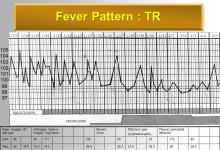Opioids No Better than NSAIDs at Chronic Pain Save

JAMA reports that the SPACE trial demonstrates patients with chronic back or arthritis pain respond equally to 12 months of either opioids or non-opioid (acetaminophen or NSAIDs) analgesics. (citation source:bit.ly/2tpquTM)
The study enrolled 240 patients from the Veterans Affairs primary care colinics with chronic pain in the back, knees or hips. Patients were randomized to receive opioid vs nonopioid therapy and over 12 months were assessed for pain-related function (Brief Pain Inventory [BPI] .
All patients followed a treat-to-target strategy aiming for improved pain and function. Opioid patients were given immediate-release morphine, that could be followed by hydrocodone/acetaminophen, or immediate release oxycodone and lastly a long-acting morphine or oxycodone or fentanyl patches.
The nonopioid group received acetaminophen or a nonsteroidal anti-inflammatory drug. If ineffective therapy could be escalated to gabapentin, topical lidocaine, pregabalin or even tramadol.
The mean age was 58.3 years, 13% were women, and 97.5% completed the trial.
Groups did not significantly differ on pain-related function over 12 months (overall P = .58). Pain intensity started at 5.4 for both groups but fell significantly more with nonopioids (3.5) than opioids (4.0) after 12 months (overall P = .03).
On the other hand, adverse events were significantly more common in the opioid group (1.8 vs. 0.9; P = .03).
These results do not support the use of opioids as initial therapy in those with moderate to severe chronic back pain or hip or knee osteoarthritis pain. These results do not apply to management of cancer related pain.










If you are a health practitioner, you may Login/Register to comment.
Due to the nature of these comment forums, only health practitioners are allowed to comment at this time.